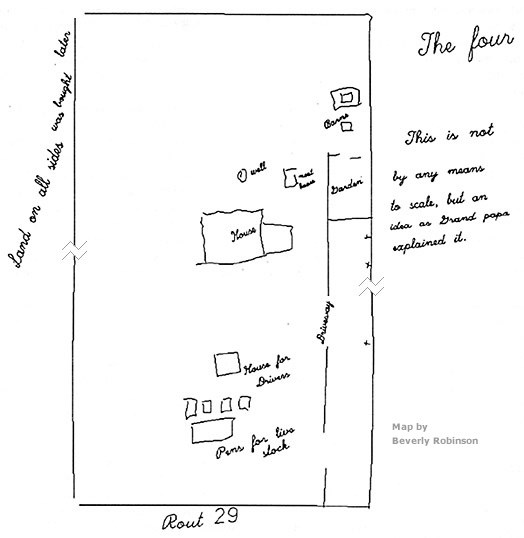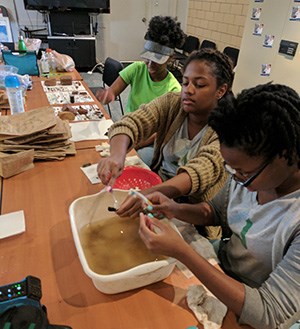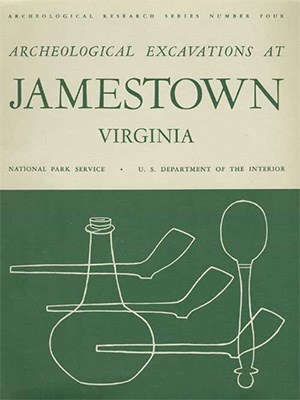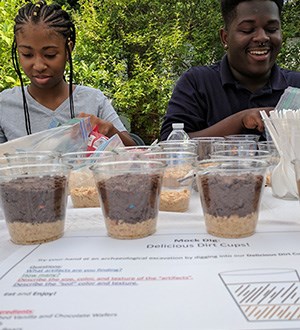Last updated: May 16, 2023
Article
What Are the Steps of an Archeological Project?


Ask Questions and Develop a Research Design
Archeologists' goal is to refine and improve our understanding of the past. To do so, archeologists test hypotheses from past archeological studies and make new hypotheses using evidence they gather from artifacts and soils.
First, archeologists propose research questions they hope to answer through excavation and other research methods. They get input from descendent communities, associated tribes, and local groups. The questions might include:
- Who lived here, and when? Why did they leave?
- What kinds of things did people make, and who made them?
- How did they express themselves and their culture?
Next, archeologists create a research design to match the questions with the archeological methods best suited to address them. The research design is a plan to complete a project.

Secure Permits and Do Consultation
Archeologists must have permission to excavate in national parks and other federal lands. They apply for a permit for archeological investigation to get permission. Disturbing sites or removing artifacts without a permit on federal land is against the law.
Tribes, states, individuals, and affiliated groups consult with archeologists from the earliest stages. Consultation ensures that the people most connected to the site are included in the scientific process.
Gather Background Information
Archeologists research a site's background to prepare for a project. They examine primary sources, such as oral histories, archival documents, maps and government records. Archeologists refer to secondary sources, like archeological reports and history books.
Archeologists check notes and reports from prior excavations, cultural studies, or historical research at the site, sites similar to it, or located nearby. Together, this prep work helps archeologists anticipate what they will find.

Conduct Fieldwork
Archeologists choose fieldwork methods that minimize impacts to archeological resources. Whenever possible, they do not disturb the ground at all.
- Minimally invasive techniques disturb the ground very little or not at all. A pedestrian survey walks across an area to see if artifacts or features are visible on the surface. Technology that sees into the ground is also common, such as ground penetrating radar or magnetometer.
- Invasive methods, like shovel testing and excavation, disturb the soil and the archeological information it contains. Once an archeological site is disturbed or excavated, it cannot be remade and excavated again. As a result, archeologists try to exhaust other methods first and leave invasive methods for last.
Archeologists record their observations using maps, photographs, and notes. They collect artifacts (things made by people), ecofacts (things from the natural world used by people), and soil samples. These materials are kept together by their provenience (location in the site grid). Once fieldwork is complete, the collected materials go all together to a lab for processing.

Curate Collections
Processing the artifacts and associated documentation for long-term storage takes place in a laboratory. Archeologists estimate that for every one hour of fieldwork, they do at least three hours of work in the laboratory.
Collections managers first clean and assess the materials. They gently wash or brush grime from the artifacts. A conservator will conserve particularly important, special, or fragile artifacts to slow their deterioration.
The artifacts are sorted by type, typically by material (such as ceramic or metal) then design (like blue transfer printed or painted) or manufacture (for example, embossed or molded). Like materials are packaged together in archival bags, according to their site provenience. Accession and catalog numbers are added to labels on the artifacts and their containers.
The entire collection is registered in a collections management database. Then, finally, it is stored on shelves in a special, temperature-controlled facility.

Analyze the Data and Write a Report
Archeologists analyze the data collected in the field and lab to derive answers to their research questions. They may look for patterns in the data, unexpected finds, statistical trends, and other aspects. Archeologists may also compare their finds with data from other sites to gain a fuller picture about a time, place, or group of people.
Archeologists write a report after the investigation is complete. The report summarizes the research questions, field investigation methods, data found, and artifact calculations. It interprets all this information to derive conclusions about human life in the past.
Archeologists refer to reports when they want to remember what was found at a site. They may also use them when making comparisons between sites. Sometimes, the report is the only thing that remains from an archeological investigation, especially if archeologists do not find artifacts.
Scientists and historians who are not archeologists can also use archeological reports in their research. Although some sensitive data may be withheld to protect sites, reports can provide information that cannot be known other ways.

Share Results with the Public
Archeological resources are nonrenewable and fragile, but archeologists still find ways to use them again and again. One of their most important re-uses is public education. Archeologists will:
- Publish books and articles online and in print
- Make presentations to meetings, schools, and local groups
- Create exhibits in museums and signs outside
- Host volunteers and interns on supervised digs and projects
- Create educational materials, like lesson plans, park programs and special activities
There are many steps in archeological projects. They have the purpose both of ensuring that archeological investigations yield the best possible information, and doing the least possible harm to the resouces that remain in the ground. This information helps the National Park Service to tell all Americans' stories and preserve and protect them for this and future generations.
